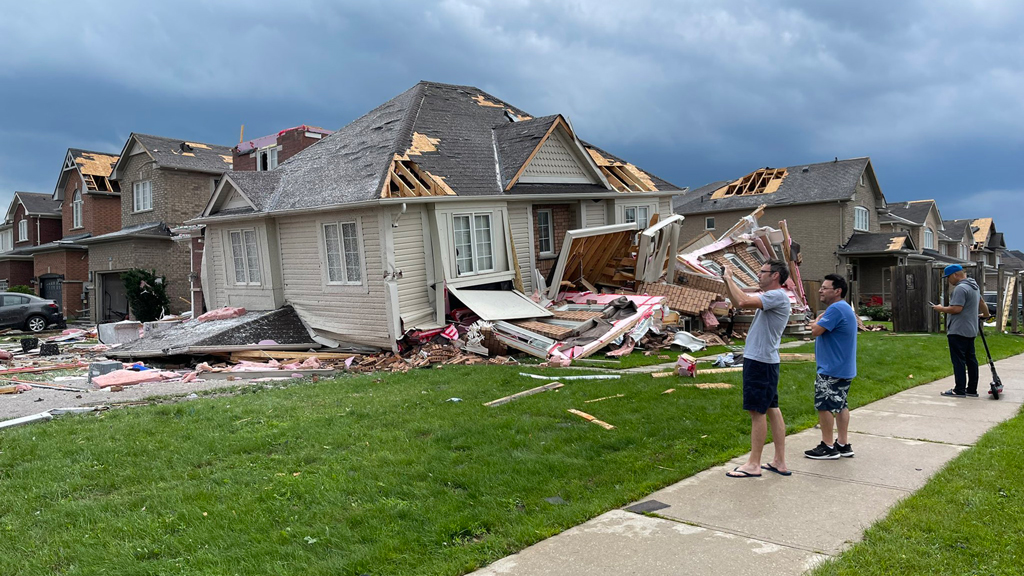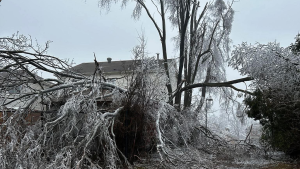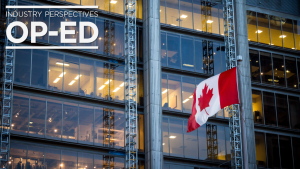The city of Barrie, Ont. was hit by an F2 tornado in mid-July. Approximately 60 homes were either irreparably damaged or rendered uninhabitable.
It’s not a unique occurrence for Barrie. In 1985, an F4 tornado killed eight and left over 300 homes in Barrie uninhabitable. In fact, meteorology experts say Canada experiences more tornados than any other country except the United States. However, mitigation provisions for hurricanes and tornados are not specifically covered by building codes across the country.
There are now calls for amendments to address high wind events. Of course, building codes represent only the minimum standard to which houses must be built. Unfortunately, many builders go no higher than that required minimum.
Sometimes not even that.
Greg Kopp, lead researcher of the Northern Tornadoes Project and an engineering professor at Western University, told local media his team’s inspections in Barrie revealed instances where even the code itself was not followed in terms of fastening roof trusses to side walls. Apparently this escaped the attention of city building inspectors.
City of Barrie representative Andrea Miller defended inspectors, saying, “Our inspections are diligent, and our inspections are done by registered professionals in this industry.”
“As much as builders claim they build to code, the building inspectors can only inspect building components they can see,” local builder and renovator Richard Speare told the Daily Commercial News.
“They don’t climb ladders to inspect nailing patterns of truss to wall connections.”
Discussion has also arisen concerning other factors that might have contributed to the extreme damage seen in Barrie. It’s creating a perfect storm between codes, inspections, structural design and energy efficiency.
For example, Speare states structural integrity has been compromised by today’s trend towards open interior designs that call for fewer interior walls.
Specialists from T. Smith Engineering, a Toronto-based building science and environmental forensic engineering firm, point to recent initiatives that make newly built homes more energy efficient.
“One of the things that we’re noticing is that in an effort to increase efficiency in building and increase the insulation of the exterior, we’re compromising some of the structural capacity of the exterior walls because they don’t have any sheathing,” Nada Mikhael, the firm’s lead for technical services, told local media.
Mikhael’s opinion is supported by company principal engineer, Terry Smith. He says new insulation requirements mean new homes gain a significant amount of their structural stability from interior drywall. He told reporters he would prefer less emphasis on energy efficiency and more on structural integrity.
This implies that structural integrity and energy efficiency are somehow mutually exclusive.
Casey Edge, CEO of the Victoria Residential Builders’ Association, agrees. When asked by the Daily Commercial News if he believed recent energy efficiency provisions played any role in the severe damage experienced in Barrie, his response was unequivocal.
“Two words — unintended consequences. The very foundational purpose of a building code is health and safety. Politicians and energy efficiency advocates are overriding this purpose. So expect more unintended consequences, higher costs and compromised consumer protection as long as politicians and advocates fast-track the building code for their agendas.”
Not surprisingly, energy efficiency experts take exception.
“Building efficiency and structural integrity are not tradeoffs. Passive House buildings routinely include exterior sheathing and hurricane straps,” Rob Bernhardt, former CEO of Passive House Canada, told the Daily Commercial News. “Lack of structural integrity is a result of shoddy structural design and/or construction.”
Specific to high wind provisions, the cost of adding hurricane straps during home construction is only a few hundred dollars. Even after construction, the cost of installing straps is roughly $600 to $1,200, according to local Barrie builder Doug Tarry.
Nevertheless, the Canadian Home Builders’ Association (CHBA) steps back from any mandatory inclusion of straps, due to their added cost. Frank Lohmann, CHBA’s director of building science, told CBC News the association instead prefers updated prediction models for possible tornado locations, followed by localized voluntary provisions and incentive programs.











Recent Comments
comments for this post are closed